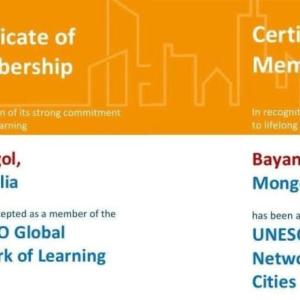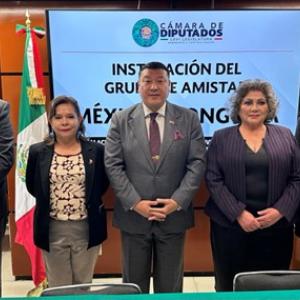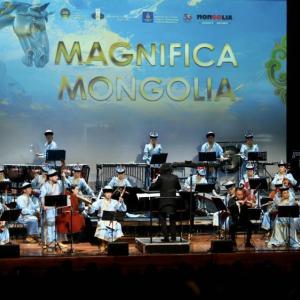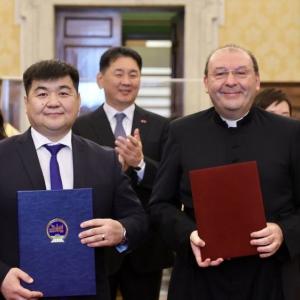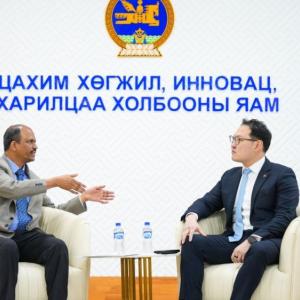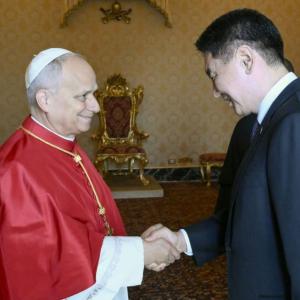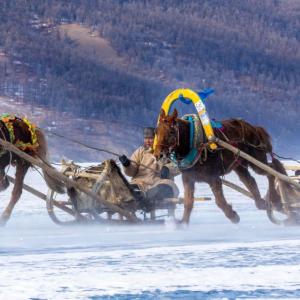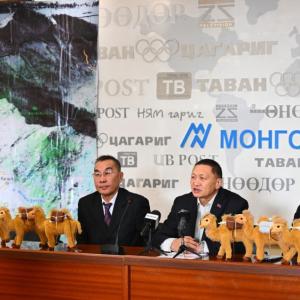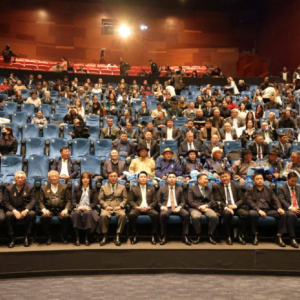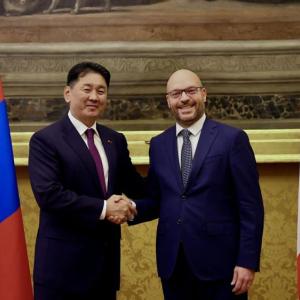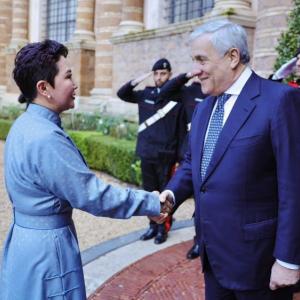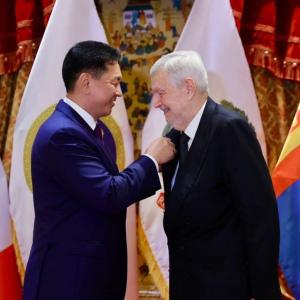Cambridge Mongolia Forum: “World Problem, Nomad Solution”
The Mongol Messenger
Ulaanbaatar, September 2, 2024 /MONTSAME/. Chinggis Khan and nomadic civilization not only offer solutions to Mongolia's challenges, but also hold significant relevance for the contemporary world grappling with existential issues ranging from warfare to climate change.
The Second Biennial Cambridge Mongolia Forum
under the theme “World Problem, Nomad Solution” provided a platform for
discussing the foundations of Mongolia's new vision, assessing the
above-mentioned claim.
Mongolia and Inner Asia Studies Unit (MIASU),
University of Cambridge, Ministry of Culture, Sports, Tourism and Youth of
Mongolia, International Institute for the Study of Nomadic Civilizations under
the auspices of UNESCO, Institute for Mongolian Studies, National University of
Mongolia, The Chinggis Khaan Heritage and Cultural Institute, Citi University,
and Mongolia National Art Gallery of Mongolia jointly organized the Forum on
August 19-20,2024.
At the Forum scholars from Mongolia, the UK,
Inner Mongolia, China, France, and Kyrgyzstan made presentations on various
topics, including Nomadic Civilization and Military Innovation; The UNESCO
Promotion of Nomadic Civilisation: Perspectives from Mongolia; Nation Branding
and the Historical Construction of the Mongol National Character; How Clean is
the Mongolian Steppe? From Nomadic to Modern Ways of Utilising Various Types of
Waste and Modern Technological Solutions, The Nomadic Origin of the State: Extrahuman
Transportation; The Ambiguities of the Kazakhs’ Nomadic Heritage; and Military
Constitution and China’s Camel Country: Rescaling Pastoralism as Heritage.
The presentation under the theme “The UNESCO
Promotion of Nomadic Civilisation: Perspectives from Mongolia” explored how
Mongolia strategically utilized its UNESCO membership to revitalize Mongolian
cultures and heritage, effectively challenging prevailing political narratives.
“Since joining in 1964, Mongolia achieved universal adult literacy in 1968,
actively contributed to the publication of the six volumes of the History of
Civilizations of Central Asia from 1976 to 2010, and took part in UNESCO's Silk
Road Programme. This involvement led to the establishment of UNESCO
representation offices and several affiliated research institutes and centres
in Mongolia and other Central Asian countries between 1989 and 1998. In 2023,
UNESCO adopted a resolution proposed by Mongolia to publish the UNESCO
collection on the History of Nomadic Civilizations in six volumes. These
initiatives and projects, intertwined with external and internal policy
changes, have had a significant impact on Mongolian society, including academics
and politicians,” noted Ph.D Byambabaatar Ichinkhorloo from the National
University of Mongolia.

Assistant Professor Eric Thrift from the
University of Winnipeg presented “Defining ‘Nomad-Friendly’ Cashmere: Cultural Sustainability in the Cashmere Commodity
Chain.” Whereas the marketing of cashmere apparel has traditionally highlighted
luxury and indulgence, global fashion labels have increasingly adopted
sustainability as an element of their branding. In partnership with
international charities and development organizations, or through their own
corporate social responsibility initiatives, fashion designers and retailers
have attempted to certify and market their apparel as ‘sustainable cashmere’.
“Cashmere-producing herders are themselves also branded through this process,
marked by their willingness to participate in self-regulation and
self-improvement regimes. Through ethnographic research investigating the ways
that Mongolian herders perceive and navigate sustainable branding and
certification initiatives, we find that the concept of ‘sustainable cashmere’
brings a narrow, technical scope to the political economy of pastoralism.
Herders' own political concerns, often articulated with reference to the
safeguarding of nomadic pastoral cultural heritage and identity, may better be
captured in international branding through the concept of ‘cultural
sustainability’,” suggests Mr. Eric Thrift.
Moreover, in the session “Modern Challenges of
Nomadic Representation in Contemporary Arts of Mongolia” the presenters
explored a range of artistic representations in contemporary visual art and
music by showcasing the works of well-established and emerging young artists,
including Enkhbold T. and Munkhtsetseg L., as well as a music producer
Erdenebat B.
Within the Cambridge Mongolia Forum a special
exhibition: “Time and Space” curated by Uranchimeg Tsultem was displayed at the
Mongolian National Art Gallery.







 Ulaanbaatar
Ulaanbaatar





